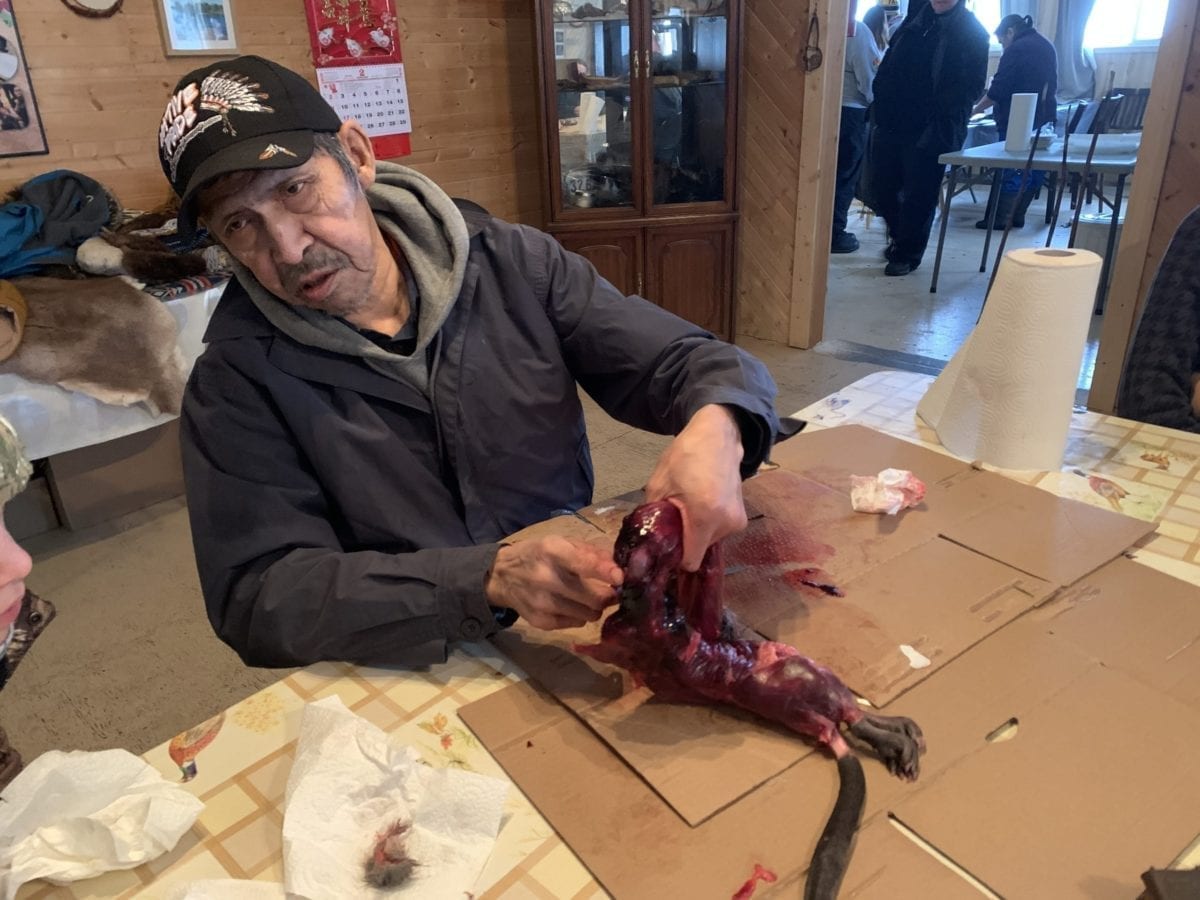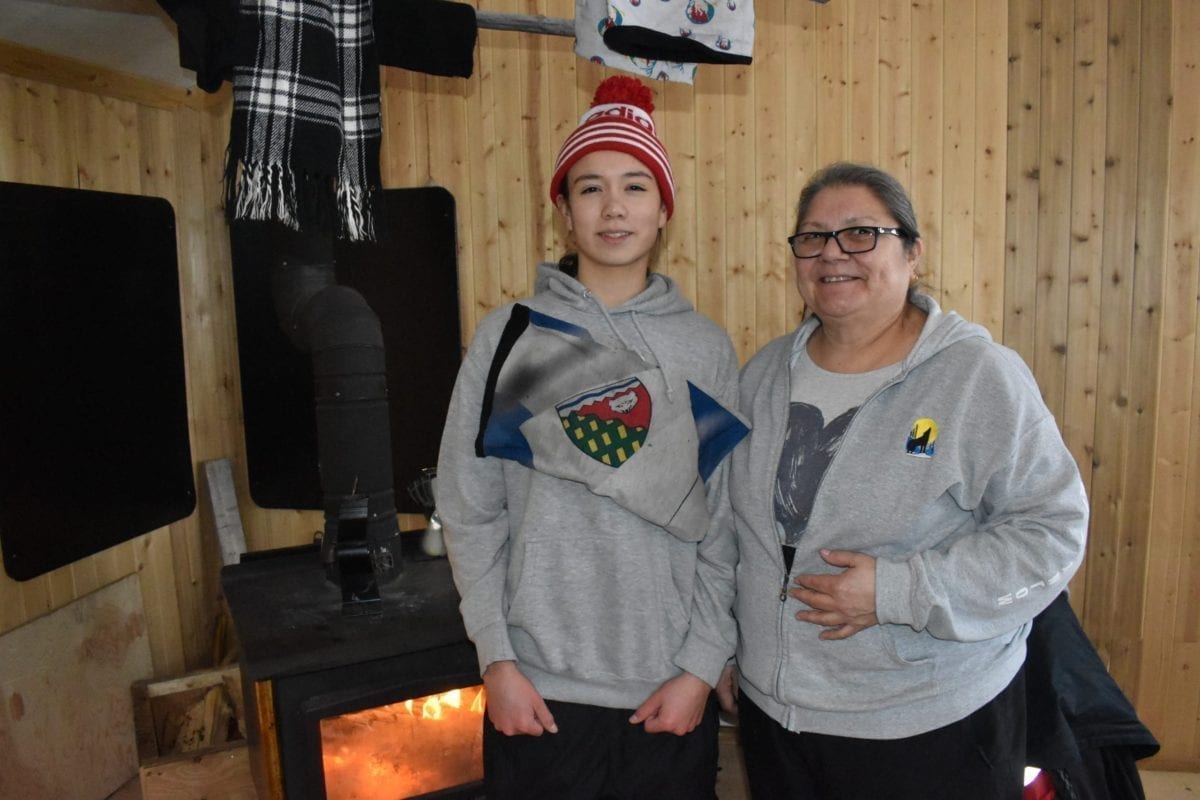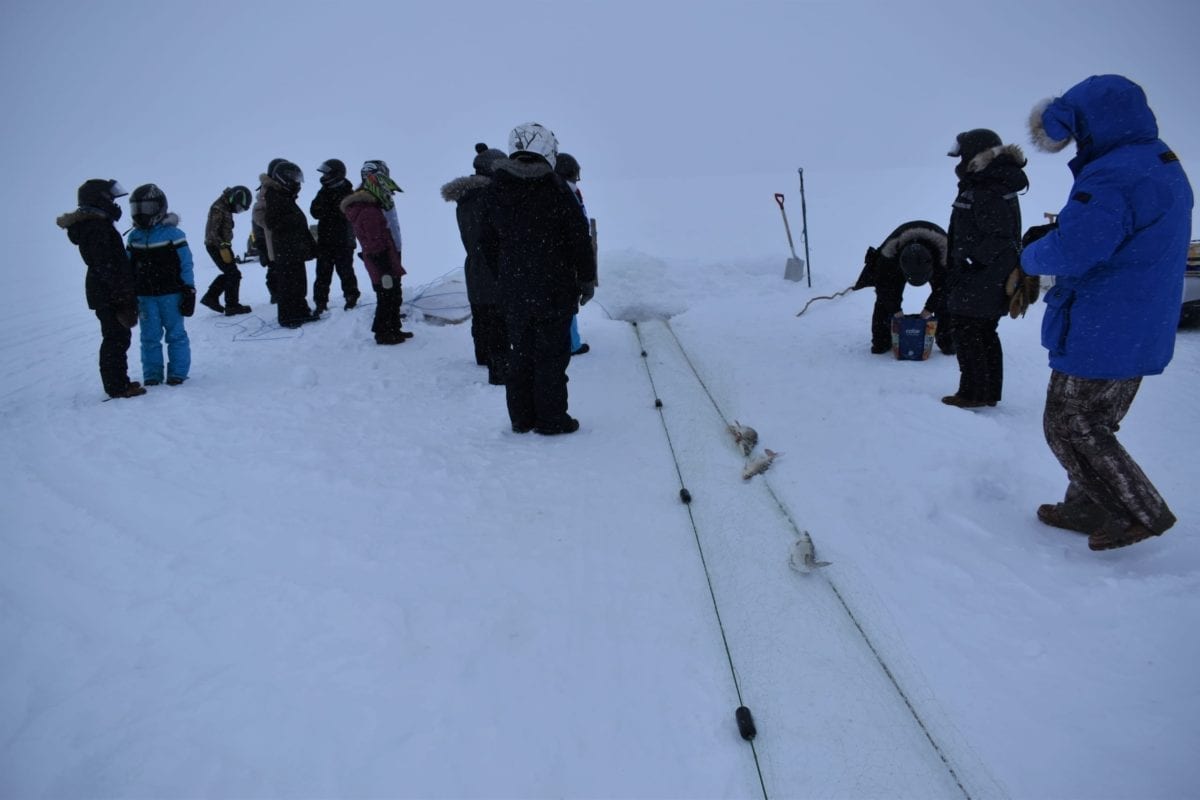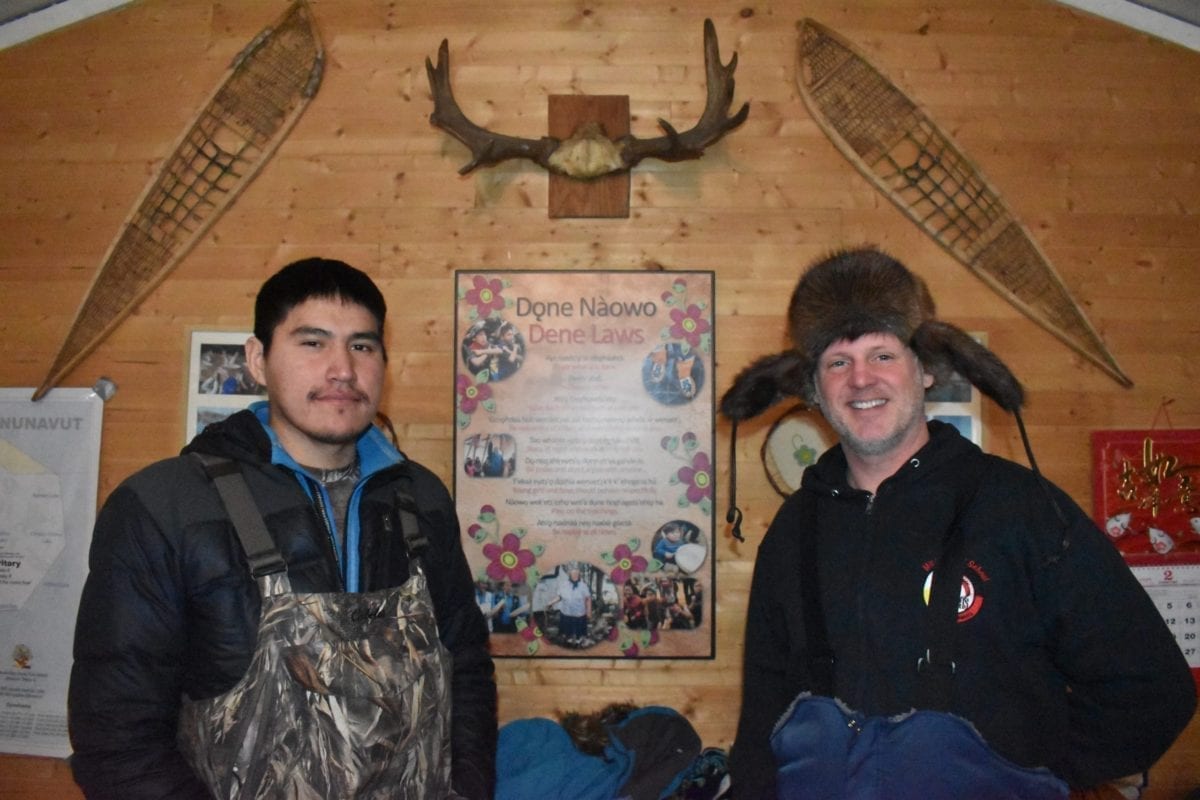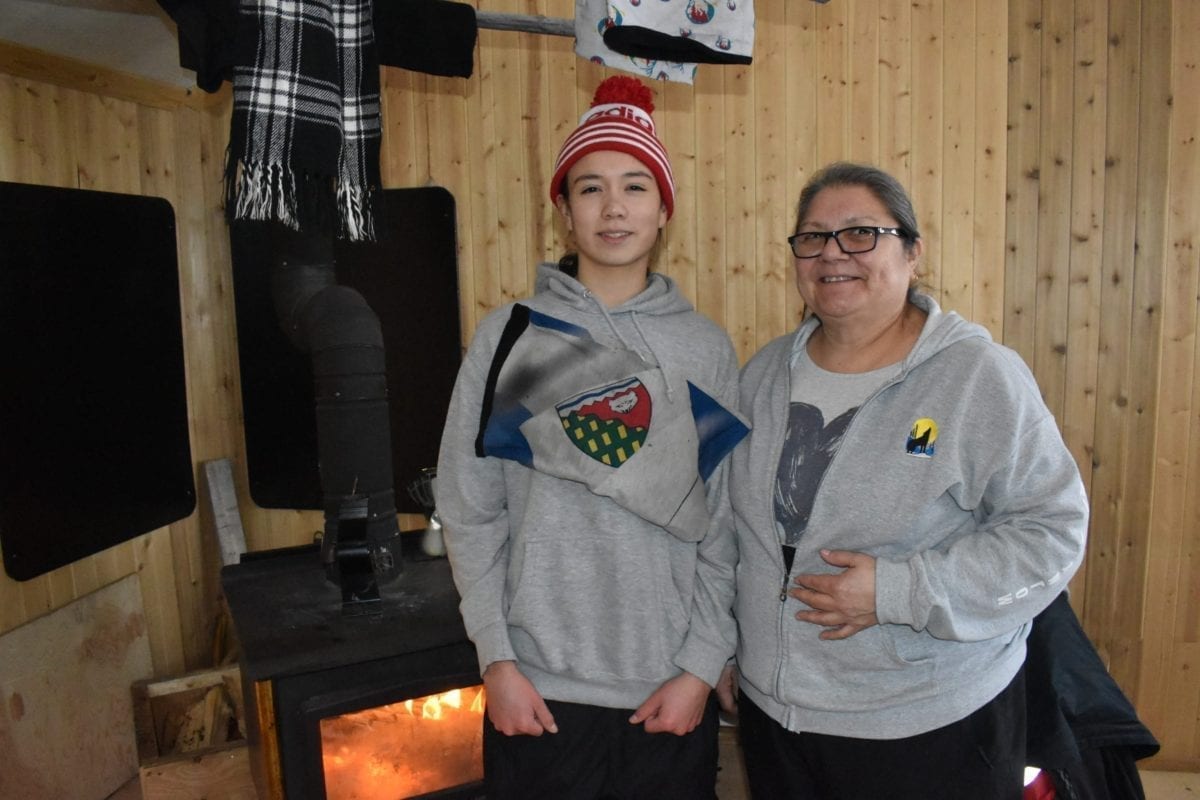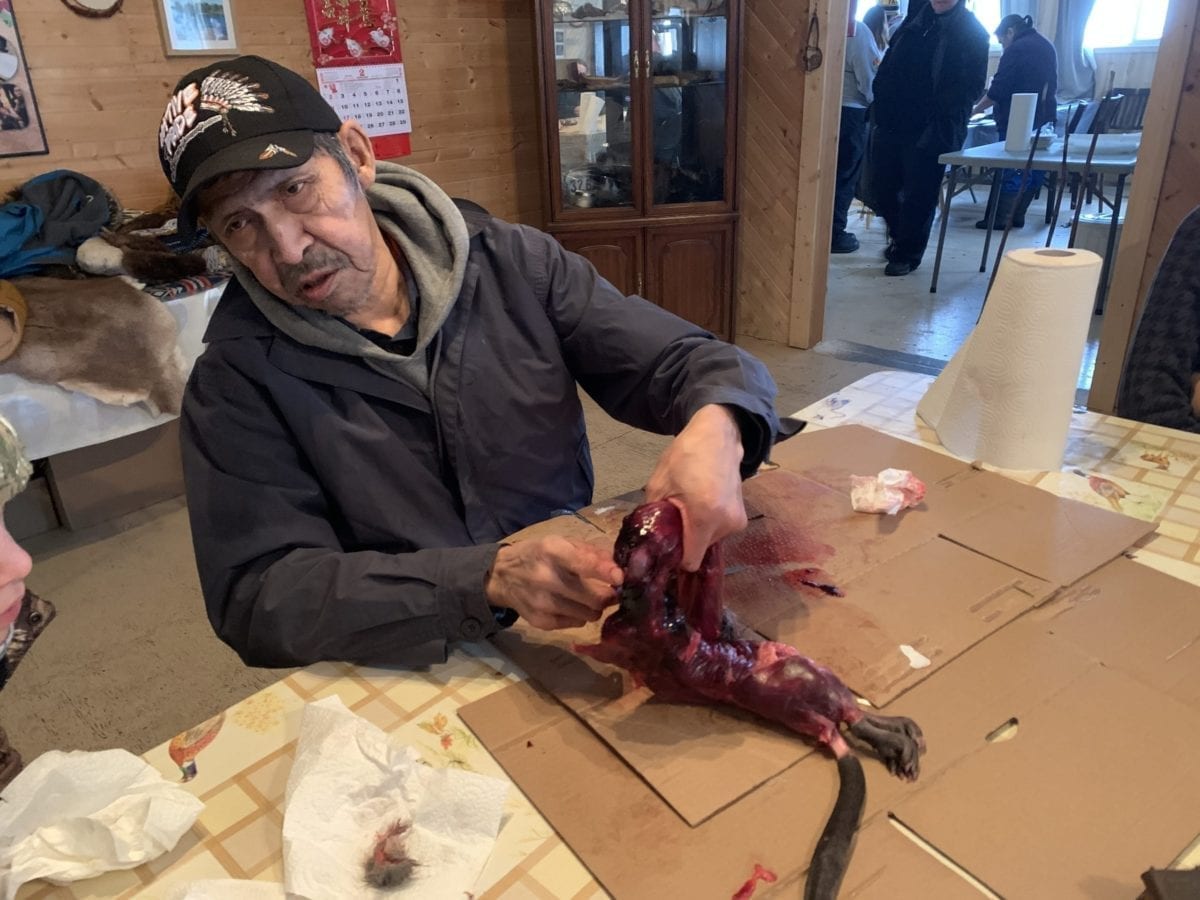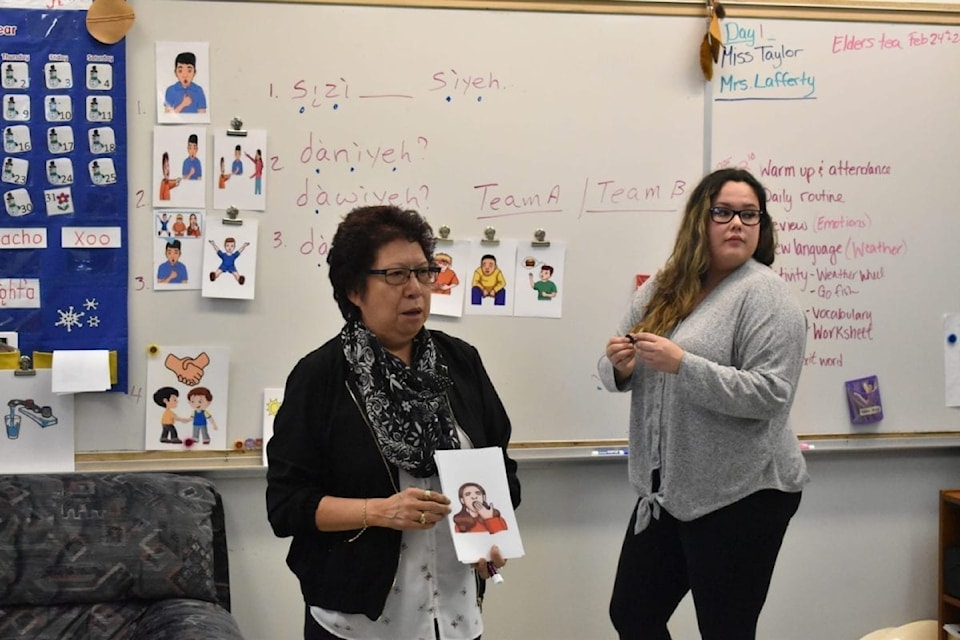Students from Sir John Franklin High School will likely remember the Wiiliideh Yatii word for muskrat after watching guide John Crapeau skin it with a knife.
“Dzo,” said Crapeau, in Wiiliideh Yatii – a dialect of Tlicho – as he pulled back the fur of the semi-aquatic rodent for Grade 9 students during their camp outing near Dettah on Feb. 13.
The youth were at the camp as part of the Dene Kede (Dene Lifestyle) program, one of the streams integrating Indigenous languages into the school curriculum.
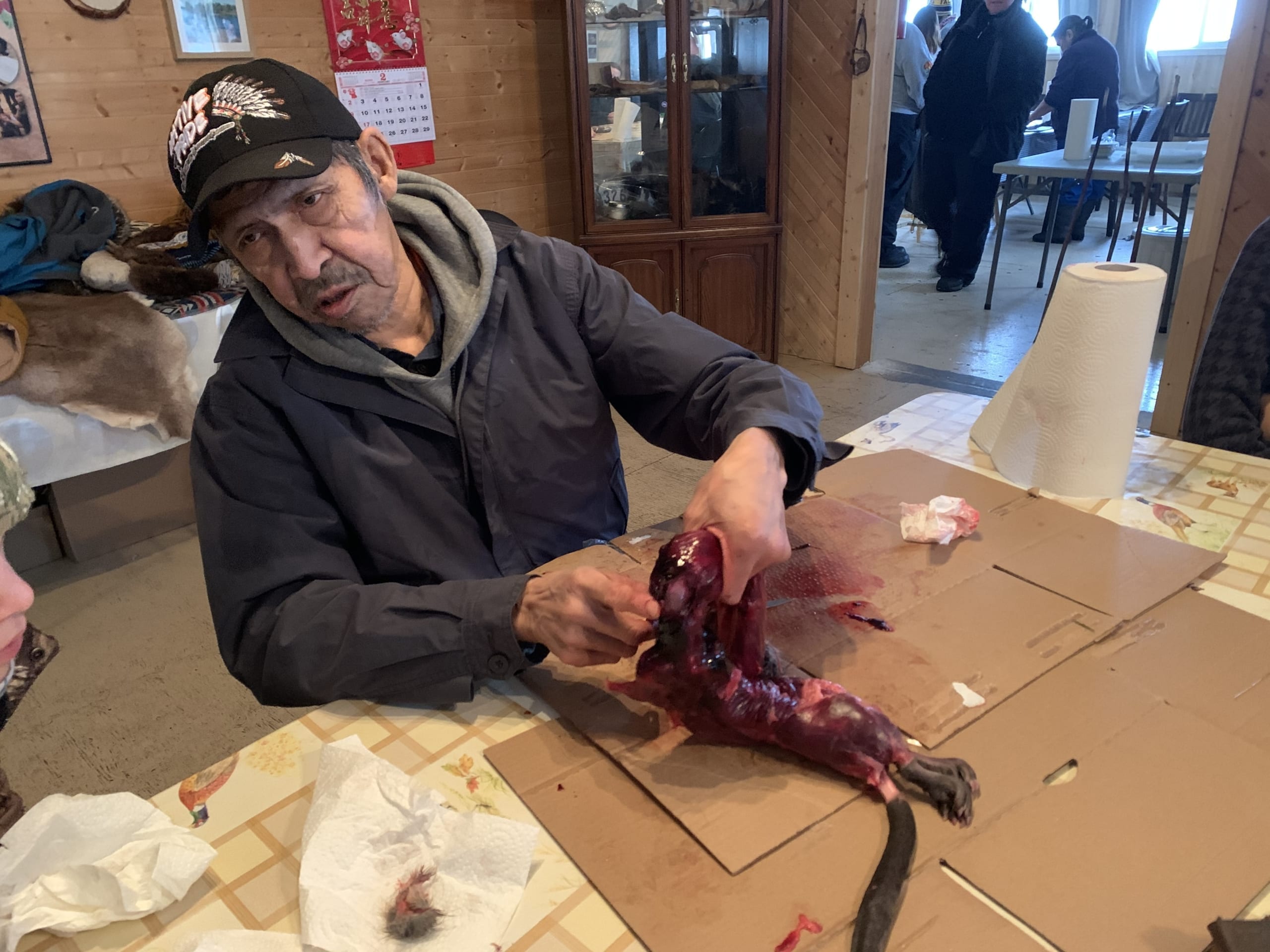
Resource assistants show the youth how to trap, fish and skin their catches, and when possible they teach them the Wiiliideh Yatii vocabulary for the activities and animals.
“When we're out here on the land our resource people should be speaking to the kids in the Wiiliideh language, teaching them little phrases. Saying things like, 'Today we're going to learn to cut fish,' and then they'll say it in English. And the next thing (they) give them instruction in Wiiliideh and then explain it in English,” said Sheila Stewart, Dene Kede facilitator with Yk1.

“Our dream is that they can use their language constantly but we don't have enough speakers to do that. I wish we had more resource people that spoke. Very few young people speak the language.”
Stewart explained that Wiiliideh Yatii should be the largest component of Dene Kede. But with only a few fluent Wiiliideh Yatii teachers in Yellowknife schools it's difficult to sufficiently expose the students to the language.
“The cultural activities and the language should be as one. They should be tied together always,” she said.
Ehxea Zah Antoine is one of the few students at the camp who has studied Wiiliideh Yatii since he was a Grade 1 student at Mildred Hall School.
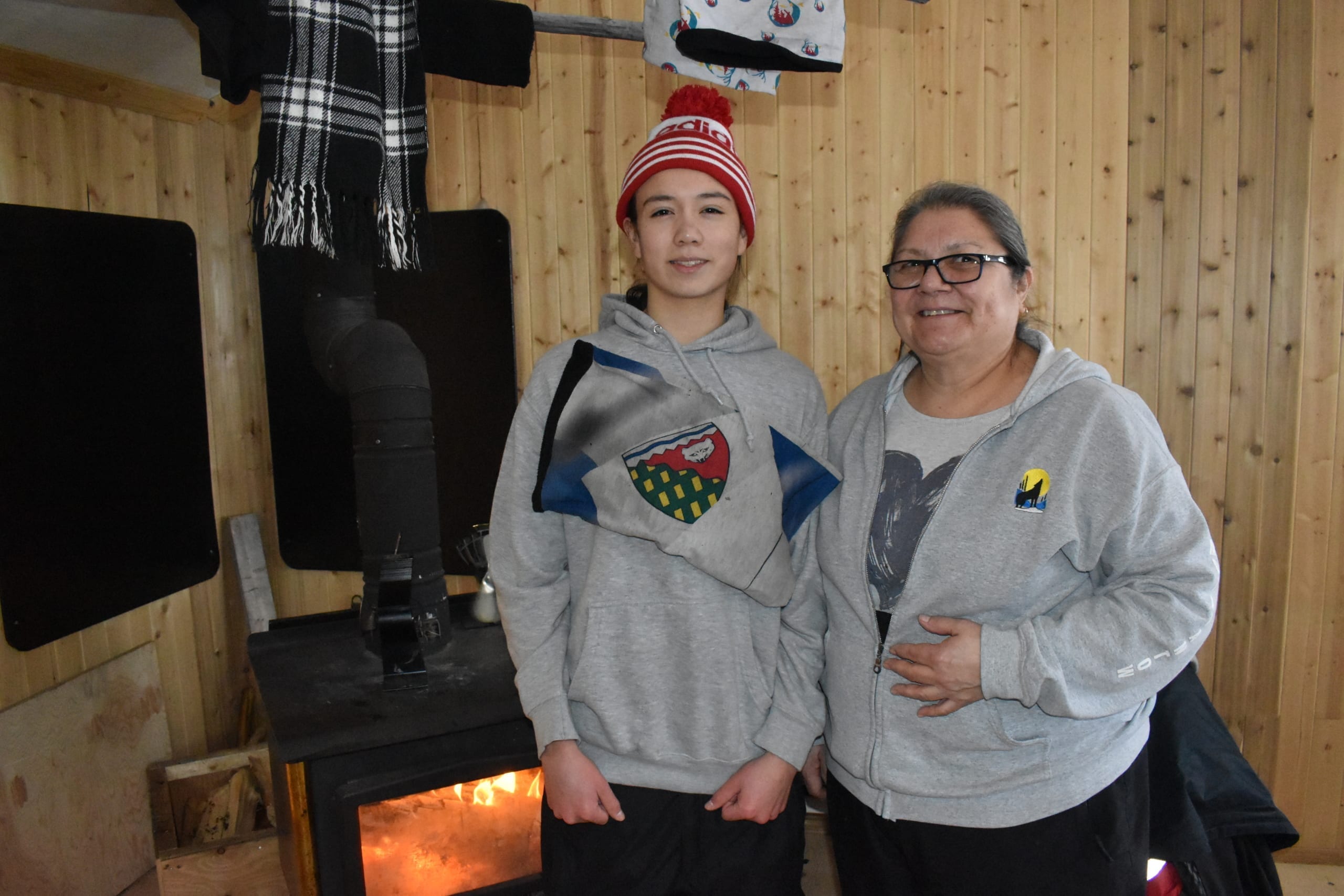
“We're learning how to (describe) the weather and introduce ourselves,” he said about his current class at Sir John.
The skills he has picked up since he was small give him a bit of a leg up when learning new vocabulary for the Dene Kede activities, but he still mostly communicates in English with the resource assistants.
His goal in learning Wiiliideh Yatii is “just to be able to talk to people.”
The territorial government has named February Indigenous Languages Month and on Feb. 12 Education, Culture and Employment Minister R.J. Simpson told the legislative assembly he is “proud to be a part of a territory that acknowledges and celebrates the diversity of language, and the rich culture of its peoples.”
For educators on the ground, there is a sense of urgency to preserve the languages, motivated by the fact that fluency in the languages among young people is lower than in earlier generations.
Official statistics paint a modest picture of speaking trends among the Athapaskan languages.
Specifically with Tlicho, a total of 2,235 people over the age of 15 have the ability to converse in the language across the territory, according to a NWT Bureau of Statistics report from 2014, the most recent year for that data. There has been an upward trend for Tlicho proficiency, with 1,511 people having conversational ability in 1989 and 2,167 in 2004.
In its scathing report earlier this month on the state of education in the NWT, the Auditor General of Canada noted how much work remains to be done with language education.
“We found that the department did not sufficiently measure the performance of Indigenous language and culture-based education or inclusive schooling over the period of our audit,” it said.
“For example, it did not assess the effectiveness of the curricula developed for culture-based education. It also did not know whether students were becoming proficient in their Indigenous languages. This is a problem, especially since the department found in 2014 that its model for language instruction was not leading to fluency.”
Educators are aware of the problem and are making efforts to turn the tide, said Scott Willoughby, Indigenous education co-ordinator with Yk1.
“Because of the history of colonialism and residential schools, the use of language has been declining over the last few years,” said Willoughby.
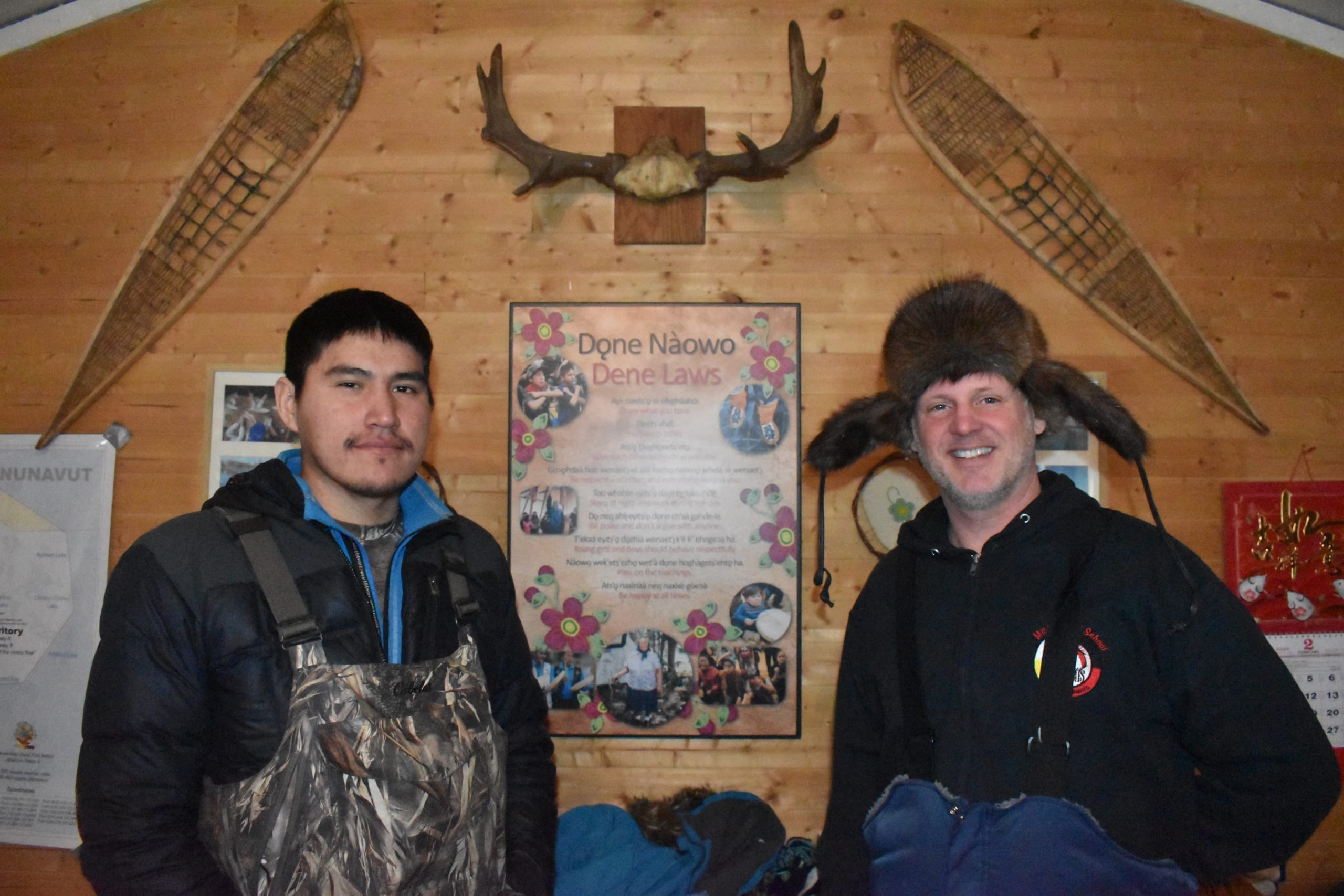
“There's been a big push to revitalize the language. There's not a lot of first language speakers working in the schools so part of my job is trying to find people that speak their language and would like to work in the schools,” he said.
The advantage of doing activities through Dene Kede is that fluent elders who might not be willing to teach the language in a classroom can impart the language to children through traditional activities.
In Willoughby's view, introducing students to the language through such exchanges is the best thing schools can do for the time being.
“If you look around you can see the kids are all having a great time with the elders and the resource people. It's not just conventional memorization of nouns and verbs, it's more of an experience,” he said.
Sir John's sole Wiiliideh Yatii teacher, Mary Joan Lafferty from Dettah, has been teaching the language since 1998 when she received her teaching certificate.
She worked for the Yellowknives Dene First Nation for 12 years and has been working for Yk1 since 2012.
She teaches the Grade 9 to 11 Wiiliideh Yatii classes with her assistant Lacey Taylor-Payne, who is originally from Nova Scotia and is learning Wiiliideh Yatii through her work.
Taylor-Payne has worked with Lafferty for three years.
In the Grade 9 class on Feb. 18, the teaching pair led the class of 20 students in asking each other their names and how they are feeling.
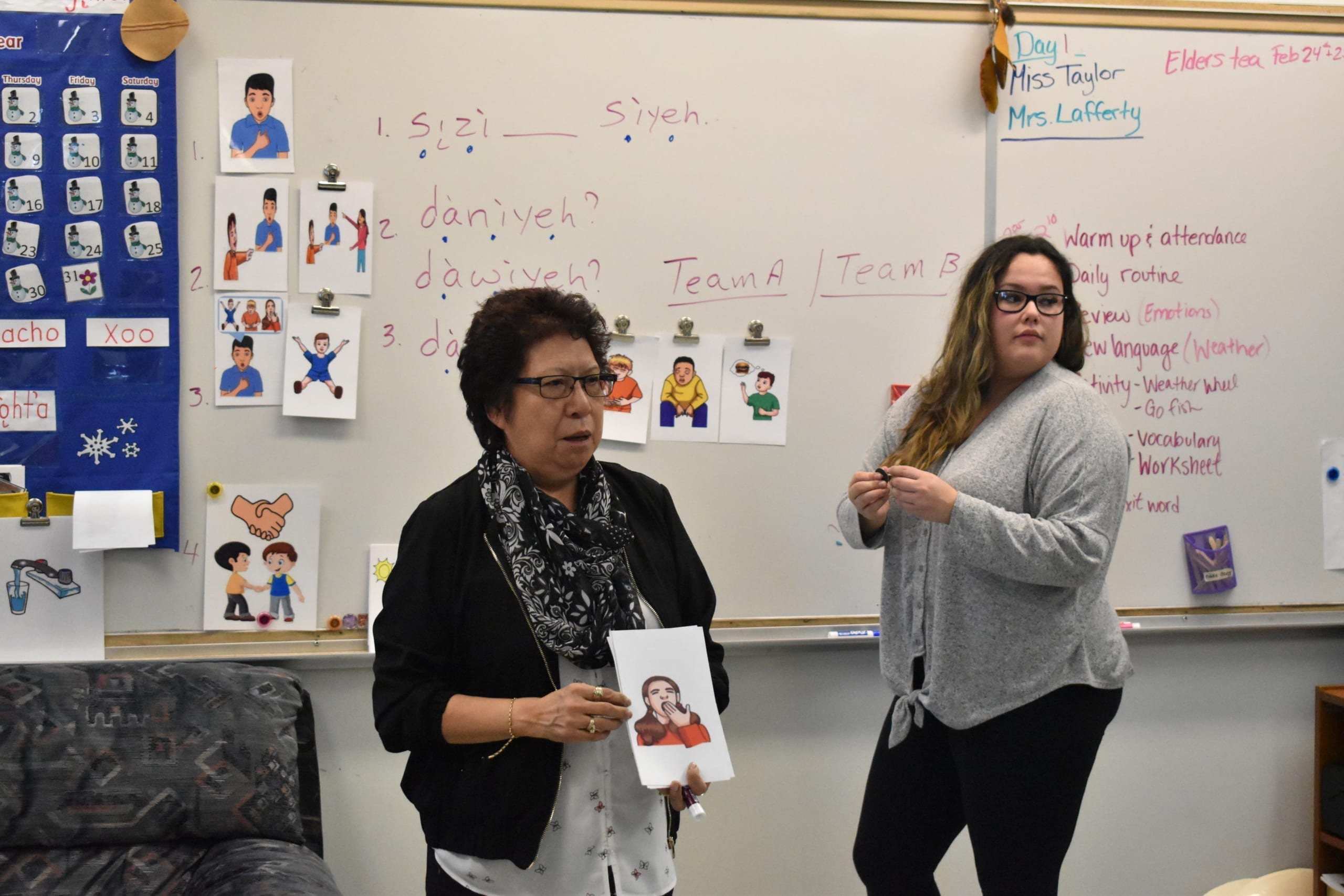
Since students were given the choice of studying French or Wiiliideh Yatii, more are choosing the Indigenous language, Taylor-Payne said.
“There's been a big turnout for Grade 9. More are choosing Wiiliideh Yatii. Last year we had two Grade 9 classes of 20 and we were turning some students away, which was a shame, but we need more language teachers in the classroom because there's a need for it.”
Last year there were 18 students in the Grade 9 class and 15 in the Grade 10 and 11 classes.
Even though the classes might be gaining in popularity, they're not immersion classes and Lafferty and her assistant use some English while teaching.
Students in in the classes at Sir John have yet to become fluent but it is hoped some will reach that level in the next five years.
Since 2017, the Wiiliideh Yatii classes at Sir John have been among several across the territory that have been piloting the Our Languages curriculum.
It is set to be fully implemented across the territory for the 2020-2021 school year from JK to Grade 12.
Outside the public school system, Aurora College offers a Master Apprentice Program through the University of Victoria that pairs a native language speaker with a learner for intensive lessons.
College Nordique also offers Tlicho classes alongside pairings of elders and students who can learn the language through activities like cooking, beading and fishing.
Fact file: Greetings in Wiiliideh Yatii
“Daniyeh/Dawiyeh?” (What is your/his/her name?)
“Sizi Miss Taylor siyeh (My name is Miss Taylor.)
“Daani ediidi?” (How are you?)
“Be ayila” (I'm sleepy.)
“Bo waehwhi” (I'm hungry.)
